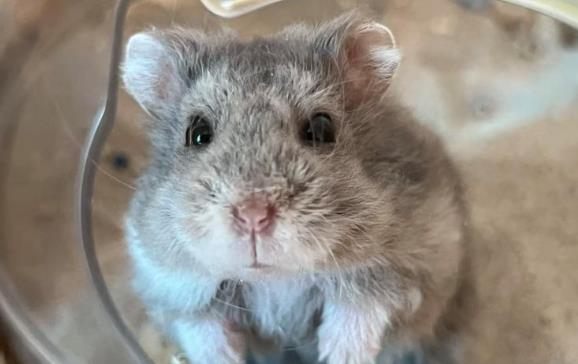Hamsters typically do not play with each other, especially adult hamsters—they tend to live alone. Forcing interaction between them may lead to fights or even injuries. However, young hamsters or certain breeds may exhibit brief interactive behaviors under specific conditions. Below is a detailed analysis:

I. The Solitary Instinct of Hamsters
Strong Territorial Awareness: Hamsters are classic solitary animals, and each requires its own territory. Adult hamsters mark their territory with scent; if another hamster enters, it may trigger an attack.
Resource Competition: When resources like food, water, or toys are limited, hamsters will fight over them—especially among male hamsters.
Personality Differences: Even hamsters of the same breed can have different personalities. Some may be gentler, but most remain alert and avoid contact with other hamsters.
II. Interactive Behaviors Among Hamsters
Brief Interactions in Young Hamsters
Age: Baby hamsters (under 3 weeks old) may sleep together and cuddle, but this behavior fades as they mature.
Reason: Young hamsters have not yet developed strong territorial awareness and need the group for warmth and a sense of security.
Gentle Interactions in Specific Breeds
Roborovski Hamsters ("Dwarf Winter White Russian Hamsters"): The smallest breed, with a relatively mild temperament. They may tolerate short-term cohabitation with the same sex, but close observation is still necessary.
Campbell's Dwarf Hamsters (e.g., Wild-Type, Purple Winter White): Most will still fight, so cohabitation is not recommended.
Brief Interactions During Estrus
Female Hamsters in Estrus: May allow male hamsters to approach, but they must be separated immediately after mating—otherwise, the male may be attacked.
Risk: Interaction during estrus still requires strict monitoring to prevent fights.
III. Risks of Forced Cohabitation
Fights and Injuries: Hamsters fighting may bite each other, causing bleeding, infection, or even death.
Excessive Stress: Long-term cohabitation can lead to anxiety, loss of appetite, and abnormal behaviors in hamsters.
Uncontrolled Breeding: If not separated in time, female hamsters may become pregnant frequently, which harms their health.
IV. How to Enable "Safe Interaction" for Hamsters
Housing Separately: Provide each hamster with an independent cage to avoid direct contact.
Supervised Playtime: Under supervision, let hamsters move around in a safe area individually—avoid sharing the same space.
Scent Exchange: Relieve anxiety by swapping items (e.g., bedding, toys) between cages to help hamsters gradually get used to each other’s scents. Note: This only eases anxiety, not promotes interaction.
Enrichment Toys: Place exercise wheels, tunnels, and wooden blocks in single-hamster cages to reduce loneliness.
V. Handling Special Situations
Female Hamsters with Pups: Mother hamsters care for their pups alone. Male hamsters must be completely isolated—otherwise, they may eat the pups.
Injured Hamsters: If a hamster is injured from fighting, separate it immediately and seek veterinary care to prevent infection.
Introducing a New Hamster: If cage merging is necessary, proceed step by step:
Keep them in separate cages for 3-5 days to let them get used to each other’s scents.
Allow brief contact in a neutral area (no territorial markings).
Supervise the entire process and be ready to separate them at any time.
